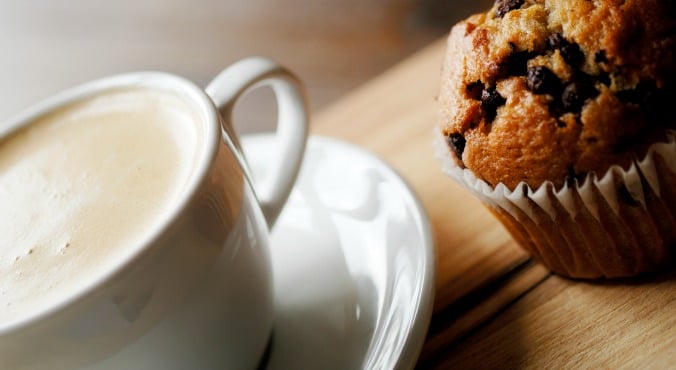
Image: iStock. By: Kathy Chapman, University of Sydney.
Whether it’s a coffee in hand as we walk through the office door, or a way to beat the 3pm slump, many of us rely on our local barista to get us through our working day. Australians consume a total of 16.3 million cups of coffee each day.
But while it’s easy to adjust your daily energy intake to account for the 300 kilojoules in your small skim latte, the snack you grab on the side – or the coffee alternative – could be using up to half your daily kilojoule (kJ) allowance.
Our latest study looked at drinks and sweet snacks in five coffee chains that combined have more than 2,000 stores around Australia. If you can’t go past the banana bread, pastries, muffins and cakes, it’s likely you’re consuming too much energy, saturated fat and sugars.
Daily energy allowance.
The Australian Dietary Guidelines recommend we limit the intake of saturated fat, salt, sugars and alcohol, and eat according to our energy needs to maintain a healthy weight.
Fast food outlets, bakeries and coffee and doughnut chains in New South Wales, the ACT and South Australia are required to place the kilojoule content on their menu boards and prominently feature the average adult daily energy intake of 8,700kJ.
Looking for a healthy snack idea? Try Paper Tiger’ green smoothie recipe. (Post continues after video.)





























































































